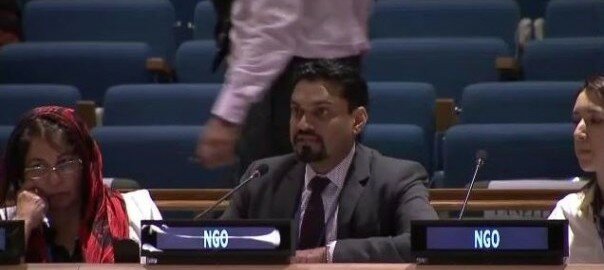A man is disfigured and shunned by his community. A child is too tired and sick to go to school. A woman is blinded by an infection. These are just some of the effects of neglected tropical diseases (NTDs). There are 1.4 billion of these stories — one for each person whose life is impacted by an NTD.
We can’t tell every one of these stories, so we rely on numbers. 1.4 billion people. More than half a billion children. These numbers are our rallying cry. Statistics tell us where we are improving and where we are failing, and provide a sense of scale for problems too big to comprehend.
Fifteen years ago, the United Nations (UN) established the Millennium Development Goals (MDGs), eight international development goals that brought together the global health and development community to tackle some of mankind’s greatest challenges. The eight narrow targets “helped channel everyone’s energies — and money,” according to NPR’s Nurith Aizenman. Unfortunately, that meant issues without clear targets were left behind. NTDs were listed in the MDGs as “other diseases,” and had no specific indicator. As a result, these diseases, true to their name, have remained neglected.
When the MDGs expire at the end of 2015, they will make way for the Sustainable Development Goals (SDGs), a new set of targets that present a second chance to ensure NTDs receive the attention they deserve. Back in 2000, the process of developing the MDGs was “brilliantly simple,” Mark Malloch-Brown, a member of the original UN team that developed the MDGs, told NPR. But things are very different this time around. With the MDGs far surpassing initial expectations, all eyes are on the SDGs, and the process is far from simple.
Following years of politicking and debate, the UN Summit is expected to adopt the finalized SDGs in September, and the UN Statistical Commission plans to set official indicators in March 2016. At last count, the proposal contained 17 goals and 169 proposed targets. Though critics say the proposal’s broad scope will dilute its effectiveness, these myriad goals will level the playing field, elevating important issues that were ignored by the MDGs.
NTDs are included in Goal 3 of the proposed SDGs, which reads, “by 2030 end the epidemics of AIDS, tuberculosis, malaria, and neglected tropical diseases and combat hepatitis, water-borne diseases, and other communicable diseases.” This explicit mention of NTDs is already an improvement over the MDGs, but what does it mean to “end the epidemic”? A clear indicator will be key to rallying support for NTD elimination.
But an initial draft of indicators presented during the March meeting of the UN Statistical Commission failed to include indicators for NTDs. As we have learned from the MDGs, “what gets measured gets counted,” said Global Network Managing Director Dr. Neeraj Mistry in remarks at the UN Economic and Social Council’s High-Level Political Forum earlier this month.
To effectively control and eliminate NTDs will require a coordinated global effort, and finding the right set of indicators will be extremely important. The NTD community strongly recommends:
90 percent reduction in the number of people requiring interventions against NTDs by 2030
Treating NTDs is extremely cost-effective and contributes greatly to the success of broader development goals. With medications already available, NTD elimination is not only possible, it’s within our grasp. And with a clear indicator, we can meet this target within the next 15 years.
Update: You can join the effort by asking your country’s representative to the UN to support and promote the inclusion of a global NTD indicator in the SDGs.
Photo: Dr. Neeraj Mistry speaks at the UN ECOSOC High-Level Political Forum on July 9, 2015.


